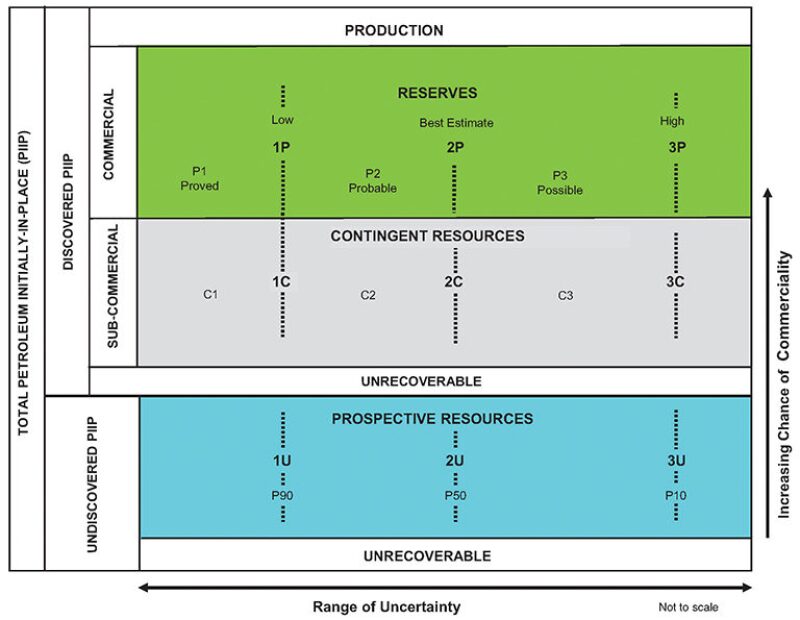The Society of Petroleum Engineers (SPE) chartered the Oil and Gas Reserves Committee (OGRC) to maintain and update the Petroleum Resources Management System (PRMS).
The PRMS is a system developed for consistent and reliable classification and categorization of hydrocarbon resources according to technical uncertainty and project maturity and commerciality.
The development of the current 2018 PRMS received the support from the World Petroleum Council (WPC), the American Association of Petroleum Geologists (AAPG), the Society of Petroleum Evaluation Engineers (SPEE), the Society of Exploration Geophysicists (SEG), the European Association of Geoscientists and Engineers (EAGE), and the Society of Petrophysicists and Well Log Analysts (SPWLA).
The current 2018 PRMS version can be obtained at https://www.spe.org/en/industry/reserves/, along with other related documents.
The OGRC is committed to continue to provide a relevant resources framework to the industry as technology and business drivers change. As part of this process, the OGRC has opened a period for public comments and feedback on the current 2018 PRMS.
Please email to Ogr@spe.org your recommendations on what should be added or edited in the existing version. The comments and feedback must be submitted by 30 June 2024 for consideration by the committee.
Having a common language for petroleum resources estimates is important to provide a measure of comparability, reduce the subjective nature of estimations, and improve clarity in communications. The PRMS is globally recognized; E&P companies and investors alike use the classification system to manage enterprise risk and make investment decisions. Some governmental organizations also require reserves and resources regulatory disclosures according to the PRMS for country strategic and planning purposes.
The PRMS is also playing an increasingly important role in the application to nonhydrocarbons such as lithium, geothermal, and other resources and energy alternatives.
The established use and acceptance of the PRMS provided the initial template for the CO2 Storage Resources Management System (SRMS) for carbon capture and utilization (CCUS).
The PRMS framework classifies and categorizes resources along two axes to organize projects and corresponding resources according to range of technical uncertainty and chance of commerciality as shown below.
The technical estimation of petroleum resources quantities involves the assessment of quantities and values that have an inherent degree of uncertainty. These quantities are associated with exploration, appraisal, and development projects at various stages of design and implementation.
The PRMS classifies recoverable resources into classes according to their chance of commerciality which is related to the maturity and chance of implementation of projects to recover them. The three major classes in the PRMS are Prospective Resources, Contingent Resources, and Reserves. Reserves are only applicable to volumes associated to commercial projects as defined in the PRMS.
Estimated recoverable resources associated to projects are then categorized by the level of technical uncertainty from low uncertainty (low estimated quantities) to high uncertainty (high estimated quantities).
Email your recommendations on what should be added or edited in the existing version to Ogr@spe.org by 30 June 2024 for consideration by the committee.

